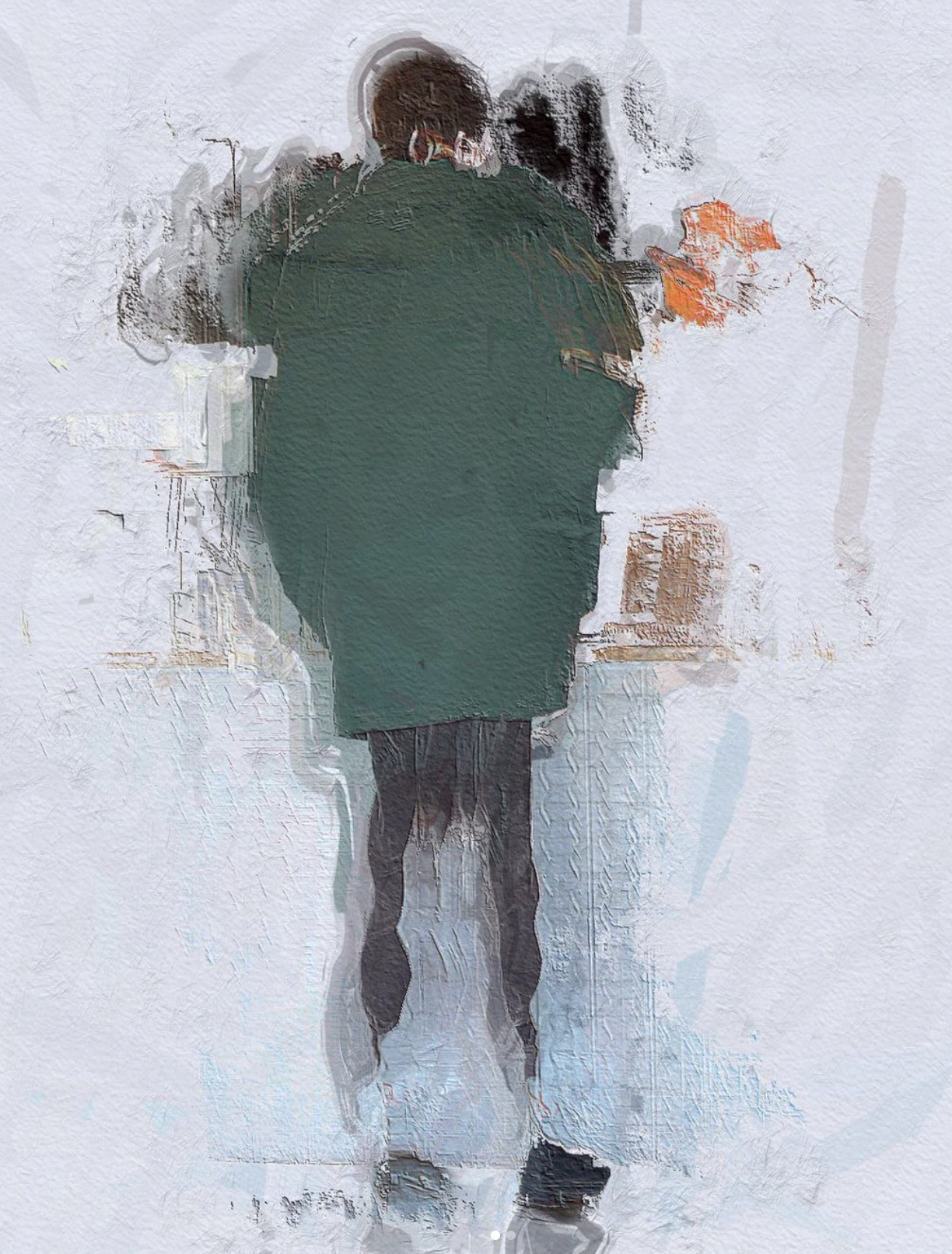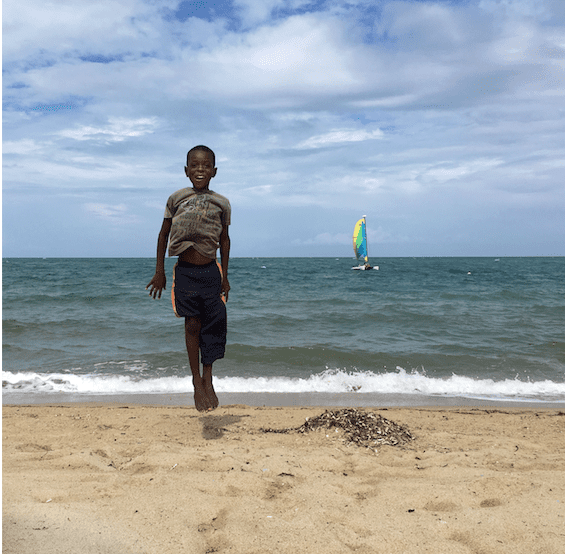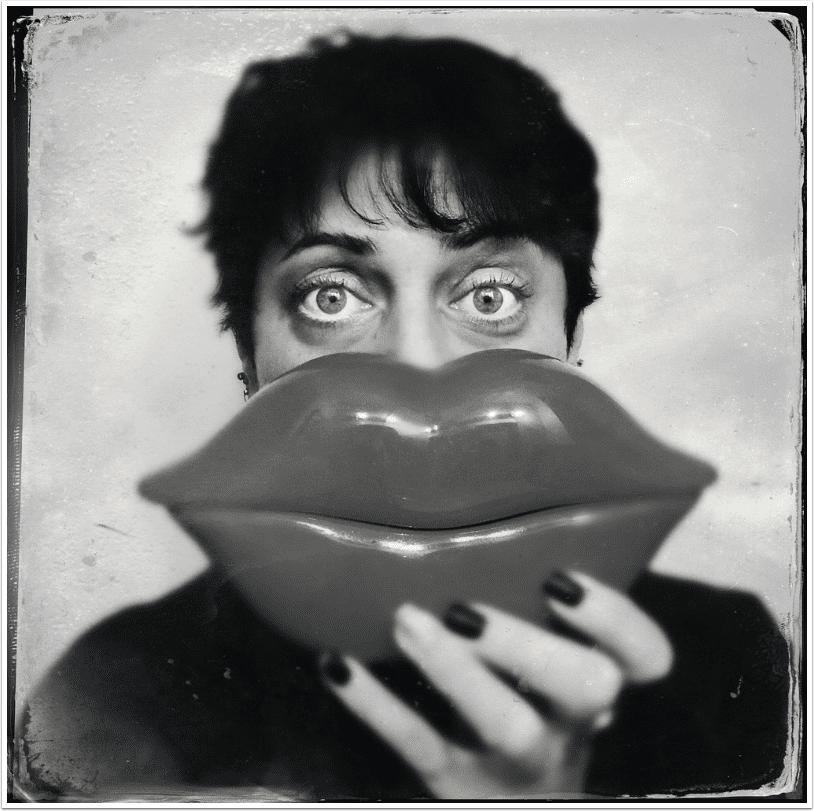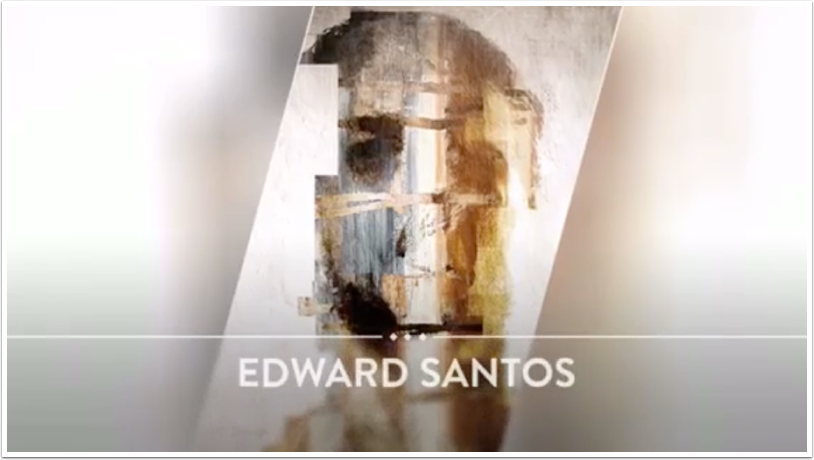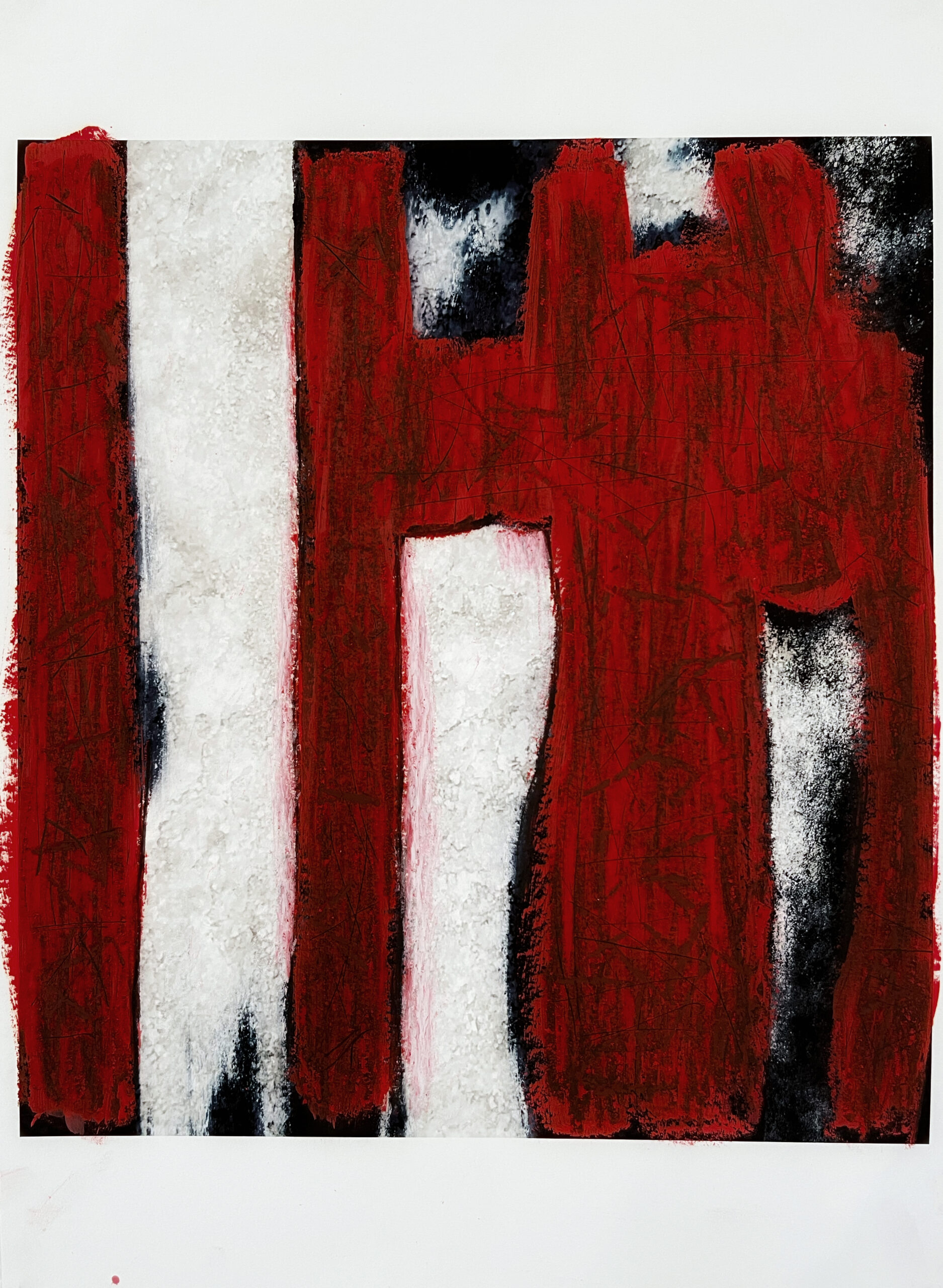
Unique Interview with Artistic Collaborators – Dutch Photographer Michèle Polak and British Painter Paul Allender
As a visual artist, would you give someone else the freedom to change your original project, giving it more depth by introducing their ideas? Not many people would, I guess. The Dutch photographer Michèle Polak did this very thing. With the English painter Paul Allender. The results of this fascinating collaboration were shown at Xavier Gras Gallery 72, Rue Amelot, Paris @xgras @lebonheurestdanslinstant in the Instant ÉPHÉMERE show at the end of October 2021. And here now on theappwhisperer.com!
Polak also exhibited at the VENICE PHOTO LAB gallery in the REBIRTH show in October 2021. The curator was Fabio Cavessago @fabiocavessago
Allender has exhibited his paintings at numerous galleries in the UK and currently in the Turps Banana online show The quick brown fox jumps over the lazy dog at https://cohort.art/quick-brown-fox
Polak calls herself a digital artist. She lives near the Dutch coastal town of Bergen and is inspired by the natural elements around her. She started as the resident photographer for De Nederlandse Opera in Amsterdam. The analogue photography of that time still helps her with her current digital compositions. She calls her current working method ‘sketching with light’.
Allender is a painter from Sheffield in the north of England. He studied Fine Art at Hull Art College and more recently on the Turps Banana correspondence course in painting. His work is autobiographical. As regards the form of the paintings, he is always grappling with the relationship between abstraction and figuration.
Polak and Allender have known each other for some time through Instagram and greatly appreciate each other’s work. Polak came up with the idea for a collaboration and Allender happily agreed. The aim is to create something new, combining photography, painting and drawing, and digital editing. The finished work is absolutely unique.
All images ©Michèle Polak and Paul Allender

Please firstly tell us more about your recent exhibitions in Paris and Venice
Michèle – The curator of @venicephotolab Venice, Fabio Cavessago, is a very experienced and hugely inventive curator and the opportunity to participate in the exhibition was an incredible experience. It was in a gallery created inside an old squero of Venice and its theme was REBIRTH. My light studies of electric blue skies were printed exceptionally large and featured in a very prominent position in the gallery. I took them during our first lockdown which was in April-May 2020 in Bergen, North-Holland. The clarity of the air was due to the absence of planes in the sky. As such, these studies are time-specific: I have registered this purity in a visual image at a particular moment
The Paris exhibition was at @xgras gallery, rue Amelot 72. My first physical meeting with Paul and our work was so exciting. We have been working for a year together not knowing what the end results might look like. The digital prints I have been sending to Sheffield turned into unique artwork, a multi-media collaboration on twelve abstracts and three nudes. It reminds me of the processes of analogue photography. Time is precious, waiting for the results: what an excitement. This journey made me realize how I need more unexpected and visceral confrontations with my own work. The multi-disciplinary way of working with Paul is a particularly valuable way to question my own images. This combination of photography, painting and digital editing is unique and cannot be reproduced. So, I realised this year how important it is for me to collaborate intensely with another artist in a different discipline.
Paul – As regards Paris, it was a wonderful opportunity for me to show, with Michèle, the work we have been making together. Our collaborative work is quite different to my own individual work and gives me the possibility of being creative with digital images that are superb in themselves. I can be spontaneous and gestural with some images and delicate and precise with others. The natural, organic images allowed an experimentation while the nudes needed a lightness and sensitivity. The final images are very bold and striking.

How does your work complement one another?
Paul – Well, I have been a huge admirer of Michèle’s work for a very long time. Her focus on the natural elements of earth, air, water and fire matches my own Taoist approach to spirituality. For me, we humans are as one with the natural world and the external natural elements are also to be found within the human body and spirit. Humanity and nature are the same.
And this leads both of us to be extremely concerned about the future of the planet. The recent COP26, the climate crisis generally and climate activism are all central to our concerns as artists and human beings.
My painting is direct, physical and expressive. It is also sensitive and emotional.

Michèle – When I first saw Paul’s paintings and drawings on Instagram, I immediately was struck by his free, open, strong and passionate approach. His direct style of mark-making is extremely inspiring. In addition to our similarities, I feel that our Gesamtkunstwerk (total work of art) is more than the sum of its parts. Our common concerns and similar attitudes to life manifest in the work, sometimes as visual harmony and sometimes as discord, not disagreement but a form which asks further questions of the original image.
Paul – The working relationship between us is particularly important. It is charged with surrender, control, fearlessness, and embrace. To invite another artist to paint on and sometimes over one’s original image requires a mutual trust, respect and admiration that goes beyond the physical processes of image-making. We conceive of the artwork of photography and paint as an object, a symbiosis of diverse ways of working to create something new. And central to it is a vital excitement about being alive and about working together and being inspired by each other. The art is in the collaborative process.

When and how did you become interested in mobile art?
Michèle – It took me a long time to realize how practical the iPhone is as a camera. In 2016 I took my first pics with the 8. After a slow start I began to see the potential of the phone. Now it is always in my pocket to use. The possibilities and quality of my iPhone 12 Pro is giving me the results I really like. Sketching with Light in dark shapes is my playground.

Please tell us more about your background in art
Michèle – I grew up in a milieu where art, photography, cinema and literature were common. My family were Dutch filmmakers and I met, at an early age, all kinds of artists (painters, writers, photographers and film makers). I saw how they lived and worked. I took all of this on board as mine and I loved it. This period of my life was so exciting and influential.
In my twenties I began to work, as house photographer, with the Dutch National Opera in Amsterdam. This was a total life-changing experience for me that introduced me to the detailed and intricate processes of music making and staging and performance, photographing this process with imagination and focus. I had the opportunity to work with Philip Glass on several occasions. His opera Satyagraha, the first with a symphony orchestra, was a controversial and tumultuous production. It was beset by intense discussions, disagreements and even a strike! To work directly with a living composer of Glass’ stature (he was viewed like a rock star at that time) in this complex and even somewhat tortuous process was an experience I will never forget. It has influenced my work in so many ways.
Paul – I grew up in a somewhat deprived community and art became a strong interest when I was aged 16. It became a lifeline for me then: at aged 18 I visited Italy with a friend to view Renaissance Art. Art has been something essential to me ever since then.
I did a degree in Fine Art at Hull College of Art in the UK a long time ago. I went on later to do a Masters in Politics and Sociology and later still a PhD in Politics. After a successful career, teaching and researching in social sciences in Higher Education for 20 years, I returned to art practice, and specifically painting, ten years ago. I am now a full-time artist. It consumes my life!

In a previous interview, I read that you explore primal themes within your art – can you please explain this more fully and explain how it influences your art?
Paul – If the definition of primal is ‘relating to an early stage in evolutionary development’ OR ‘most important; primary or fundamental’, then Michèle’s work is like this: wild; original; important; urgent; spiritual and natural. My own work is very direct, with strong and immediate mark-making. It is also autobiographical and can have a child-like quality.

Your images feel almost textural, how do you relate to this comment?
Paul – Michèle’s original images, particularly the more abstract ones, have a textural, geological quality that I love. To be able to achieve this in digital imagery is remarkable. Then, I work on them with actual, physical texture: oil stick, oil pastel and oil and acrylic paint. It is a sumptuous process.

You have explained previously that you are looking for the ‘unseen’ – how do you define the ‘unseen’?
Michèle – I am looking for what is behind the seen. Reality is not enough, for me: it must be estranged. The elements of sun, sand, air and sea, play with each other, shifting, penetrating and mixing. This produces a stream of intriguing images. Sun and wind create many different optical illusions in water: bizarre, non-existent shapes where water acts like a magical lens. This whole spectacle is a particularly important part of my life. I create images by working in layers, merging, and editing photos. They play a different role in a new whole: Panta Rhei (where everything flows). Light and darkness.

How does music play a part in your art and collaborations?
Paul – We share a love of music, Michèle’s predominantly jazz, classical and minimal, mine more rock, blues, jazz, indie and electronic. Michele encountered Eric Dolphy, Charles Mingus and Charlie Parker at an early age, and I discovered the blues of Robert Johnson and Leadbelly in my teenage years.
Most recently, we have been indulging ourselves in a huge mutual love of Jacques Brel.

Who are your influences?
Paul – In the past my main influences were Paul Cezanne, August Rodin, David Smith and Henri Matisse. More recently, James Ensor, Jean Michel Basquiat and Janet Cardiff and, currently, the abstract expressionist painter George McNeil.

Michèle – My main influences were gained through my life experiences as in my answer to question 4.
Additionally, Eisenstein’s Battleship Potemkin was so impressive that I watched all his films. But, perhaps more important, at an early age, I was struck by the camera work of Raoul Coutard, the main cameraman of Nouvelle Vague film-maker Jean-Luc Godard. The theatre photographer Maria Austria has also influenced my vision as a photographer. Much more recently I really like the free style of Daisuke Yokota. I love his visual experiments and abstractions.

What is next for your art?
We will tour our work across Europe. It began in Paris. Next is Amsterdam. We have the work we showed in Paris and will make important additions to this in the next few months and tour it.
In conclusion, here is a list of words and concepts that are central to our work, individually and together and now and in the future: control and surrender; light and darkness; fearlessness and embrace; ; excitement and vitality; visceral and daring; visual poetry; invisible/visible – the visible hidden; elemental forms and scape; connection and the natural world; existentialist dilemma; haunting and unresolved; melancholic beauty and tension; intimacy; gender construction; identity itself individual; suspension and time; relating to each other; memory and homeland; physicality, ice crystals melting; delicate and intimate; peace, happiness and healing; distance or separation of photography; connection-combines photography and paint; melancholy, grief, loss, love and the colour blue; dislocation; emotionality and spirituality.


Please support us
TheAppWhisperer has always had a dual mission: to promote the most talented mobile artists of the day and to support ambitious, inquisitive viewers the world over. As the years pass TheAppWhisperer has gained readers and viewers and found new venues for that exchange. All this work thrives with the support of our community.
Please consider making a donation to TheAppWhisperer as this New Year commences because your support helps protect our independence and it means we can keep delivering the promotion of mobile artists that’s open for everyone around the world. Every contribution, however big or small, is so valuable for our future.
